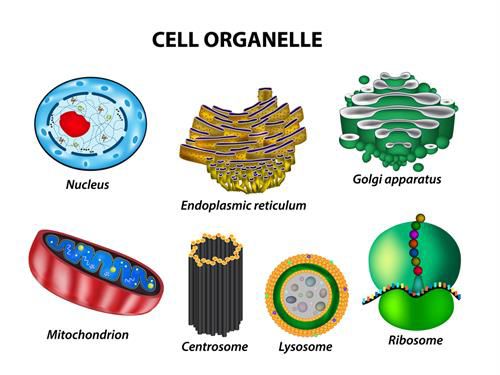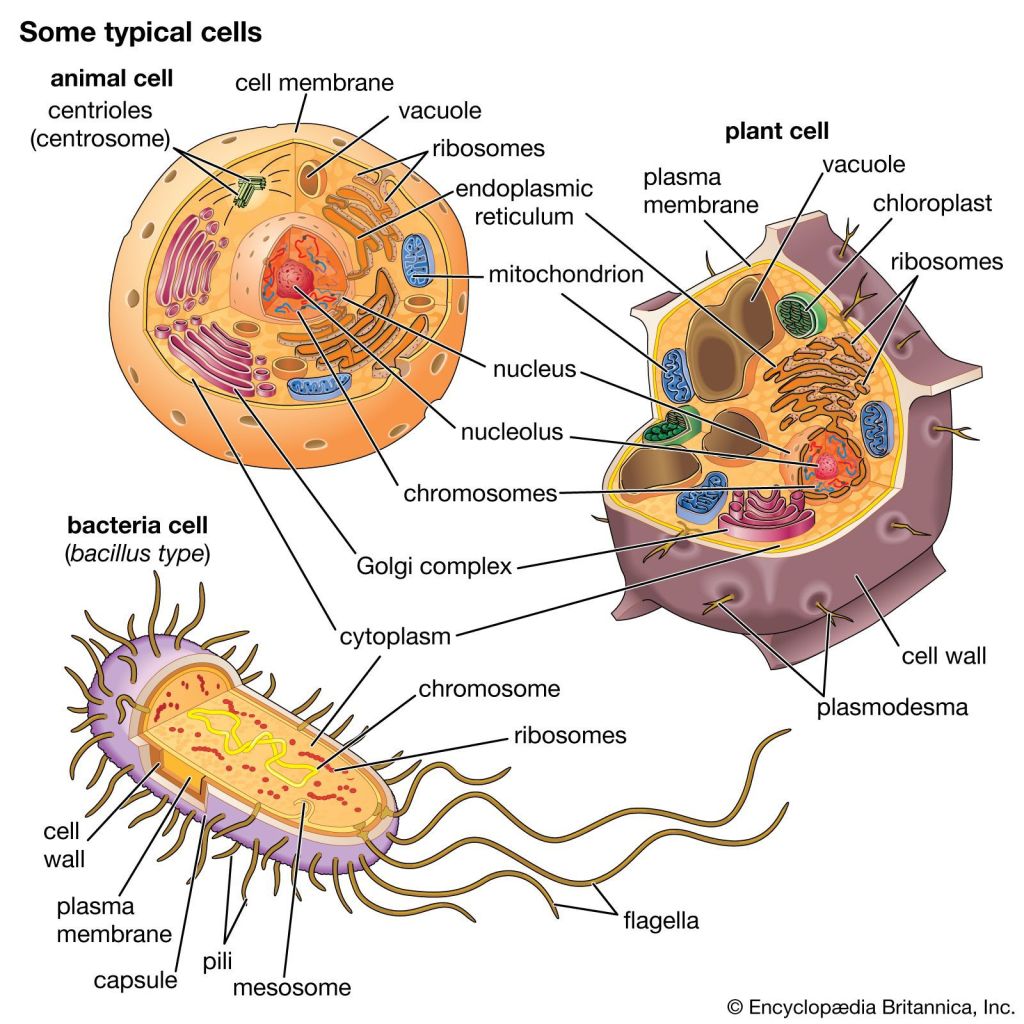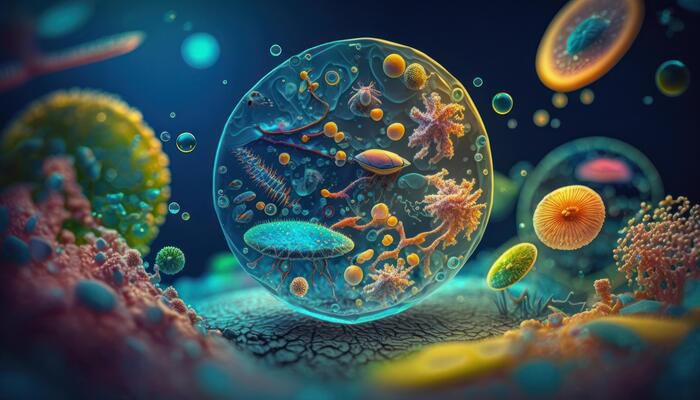A cell is the smallest unit of life that can replicate independently and is often called the “building block of life.” It is the basic structural, functional, and biological unit of all known living organisms. Cells are often microscopic in size and consist of cytoplasm enclosed within a membrane, which contains many biomolecules such as proteins and nucleic acids. Organisms can be classified as unicellular (consisting of a single cell; including bacteria) or multicellular (including plants and animals). Cells are also diverse in their structure and function, with different types of cells making up the various tissues and organs within an organism.

History
The history of cell theory, which is the scientific theory describing cells as the fundamental unit of all living organisms, began with the discovery of cells in 1665 by Robert Hooke. He observed slices of cork under a microscope and noticed box-like structures, which he called “cells.” Later, in the 1670s, Anton van Leeuwenhoek discovered single-celled organisms using more refined microscopes.
In the 1830s, two scientists, Matthias Schleiden and Theodor Schwann, formulated the cell theory, which states that all living things are composed of one or more cells, that the cell is the basic unit of life, and that all cells arise from existing cells. This theory was later expanded by Rudolf Virchow in 1855 to include the idea that all cells come from pre-existing cells.
The study of cells has since become a fundamental aspect of biology and medicine, leading to numerous discoveries and advancements in understanding life at a molecular level.

Cell Theory
Cell Theory is a fundamental principle of biology that states that all living organisms are composed of cells, which are the basic unit of life. The theory also posits that all cells arise from pre-existing cells, and the cell is the basic unit of structure and function in all living organisms.
Here’s a concise overview of the key points of Cell Theory:
– All living organisms are composed of one or more cells.
– The cell is the most basic unit of life.
– All cells arise from pre-existing, living cells.
Recent research has provided new insights into cell movement, supporting a theory from the early 1980s about the stiffness of protein fibers in tissues, like collagen, being a key component in controlling cell movement. This discovery could significantly impact fields such as regenerative medicine and cancer research.
Another study explores a cell-based theory of consciousness, suggesting that consciousness began with the first cells around 3.8 billion years ago, implying that even simple organisms like bacteria may possess a form of consciousness.
Lastly, new findings challenge previous scenarios explaining the emergence of the first complex cells, which could reshape our understanding of early cellular evolution.

Overview of Cell
Certainly! Cells are composed of several key components, each with specific functions:
– Nucleus: Often considered the control center of the cell, it contains the cell’s DNA and is involved in gene regulation, cell growth, and division.
– Cytoplasm: A jelly-like substance that fills the cell, where most of the cellular activities occur. It contains organelles and dissolved nutrients.
– Cell Membrane: A lipid bilayer that surrounds the cell, controlling the movement of substances in and out of the cell.
– Mitochondria: Known as the powerhouse of the cell, they generate ATP, which is used as an energy source for various cellular processes.
– Ribosomes: Sites of protein synthesis, where amino acids are assembled into proteins based on genetic instructions.
– Endoplasmic Reticulum (ER): Involved in protein and lipid synthesis; it comes in two forms: rough ER (with ribosomes) and smooth ER (without ribosomes).
– Golgi Apparatus: Modifies, sorts, and packages proteins and lipids for storage or transport out of the cell.
– Lysosomes: Contain digestive enzymes to break down waste materials and cellular debris.
Cells also have specialized structures like chloroplasts in plant cells for photosynthesis and flagella or cilia for movement in some unicellular organisms.
Cells perform a vast array of functions necessary for life, including metabolism, energy conversion, response to stimuli, and reproduction. The study of cells is called cell biology.
.

Types of Cells
Cells are the basic building blocks of all living organisms, and they come in various forms and functions. Here’s a brief overview of the different types of cells:
Prokaryotic Cells: These are simple, single-celled organisms without a nucleus. Bacteria are the most common examples of prokaryotic cells.
Eukaryotic Cells: These cells have a nucleus and other specialized structures called organelles. Eukaryotic cells can be single-celled, like amoebae, or multicellular, like plants, animals, and fungi
–Plant Cells: These are eukaryotic cells that have a cell wall, chloroplasts, and a large central vacuole, which are not found in animal cells. They perform photosynthesis to produce energy.
–Animal Cells: These eukaryotic cells lack a cell wall and chloroplasts but have centrioles. They are more flexible and come in various shapes.

In conclusion, cells are the fundamental units of life that make up every organism on Earth. Through the study of cells, we have gained invaluable insights into the complexities of biological systems and the processes that sustain life. The cell theory, which states that all living things are composed of cells and that all cells arise from pre-existing cells, remains a cornerstone of modern biology. As research advances, our understanding of cell structure, function, and diversity continues to expand, offering new possibilities for medical and scientific breakthroughs. The study of cells not only deepens our comprehension of the natural world but also holds the key to unlocking the mysteries of life itself.

Leave a comment